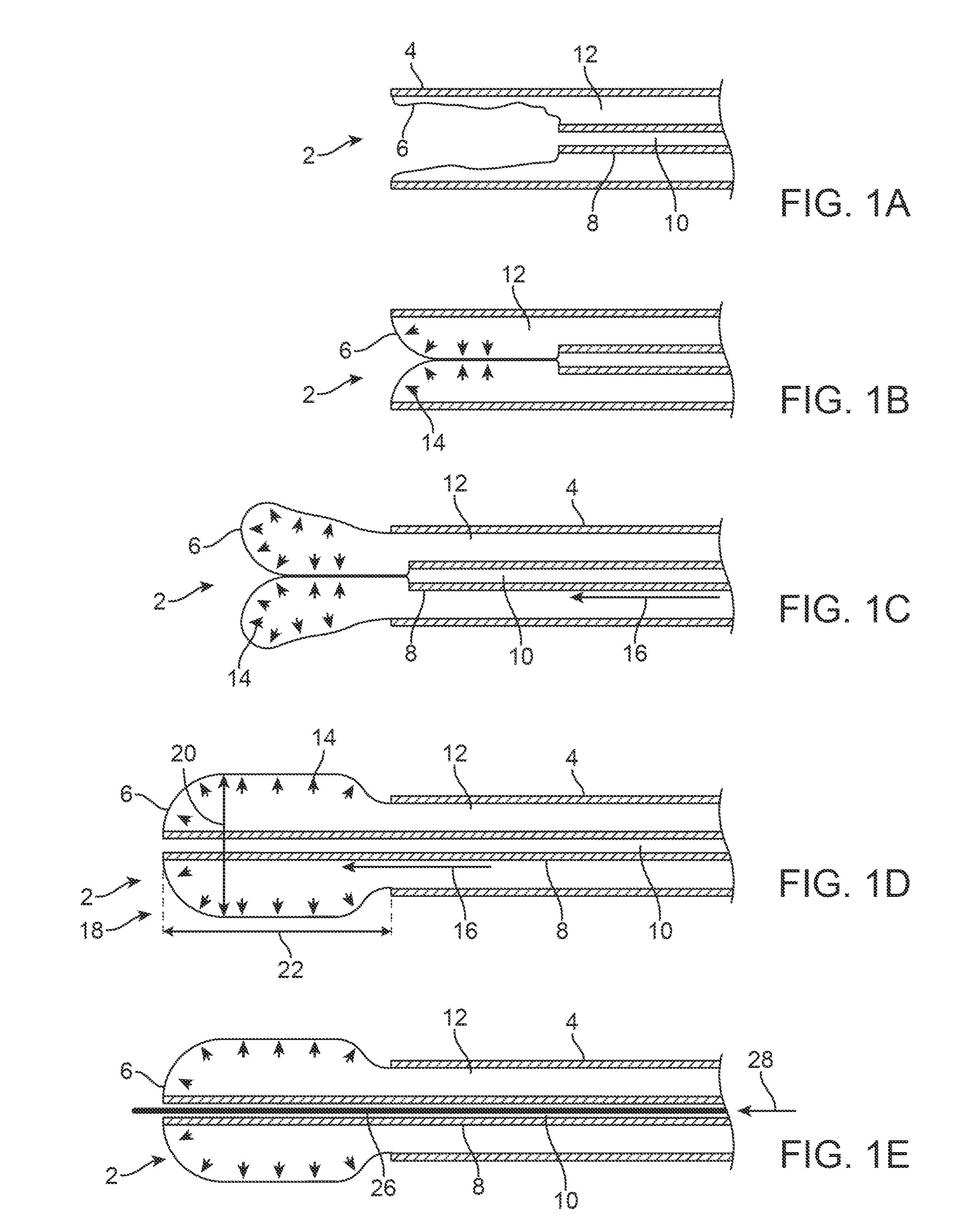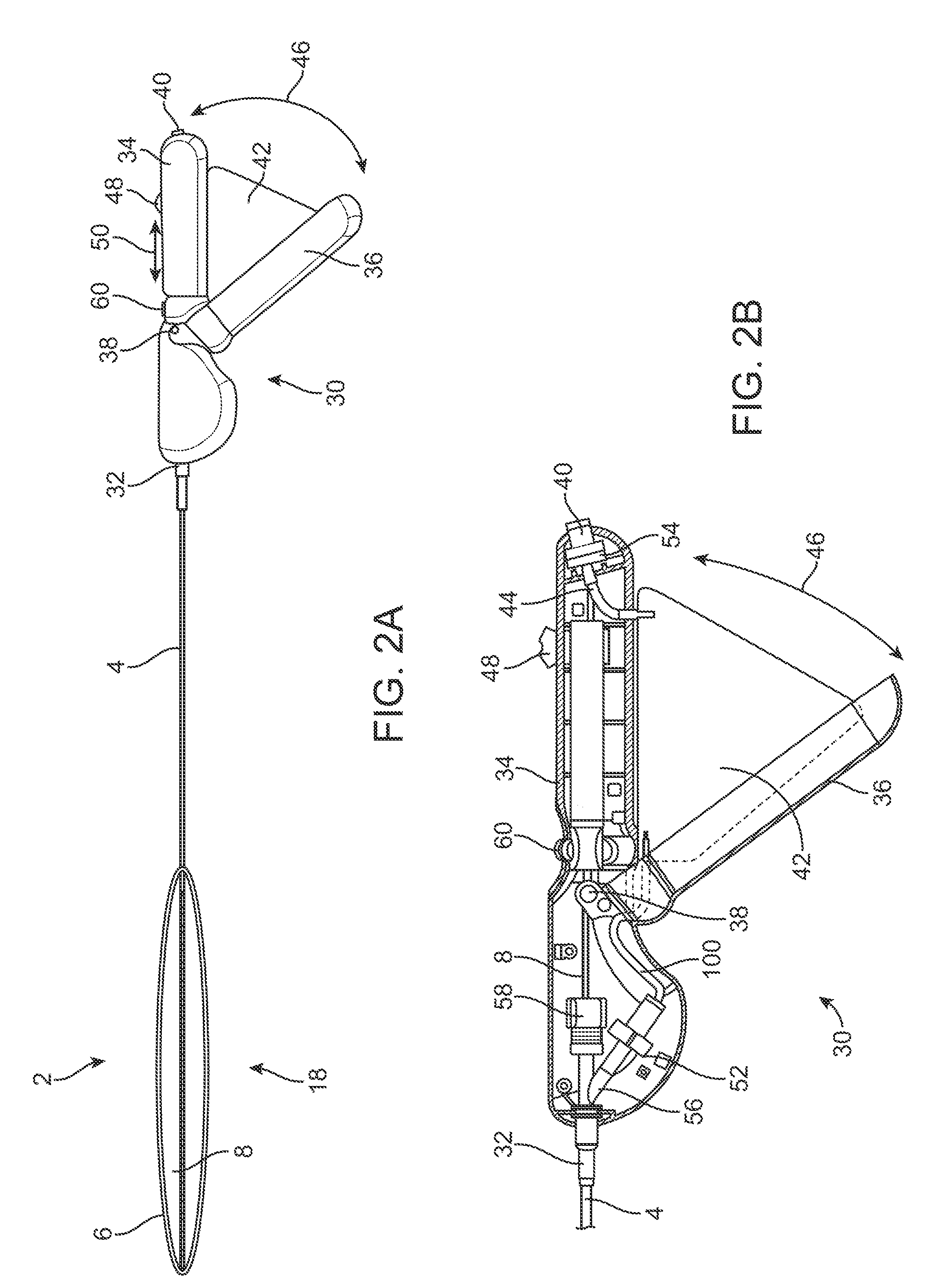Apparatus and methods for accessing and sealing bodily vessels and cavities
a technology for accessing and sealing bodily vessels and cavities, applied in the field of accessing systems for vessels and bodily cavities, can solve problems such as trauma, pain for patients, or perforation, and uncontaminated or untouched balloon material being placed inside the vessel wall, and the process can be particularly difficul
- Summary
- Abstract
- Description
- Claims
- Application Information
AI Technical Summary
Benefits of technology
Problems solved by technology
Method used
Image
Examples
Embodiment Construction
[0063]An everting balloon system 2 (also referred to as an everting catheter system) that can be used to traverse a vessel, such as the cervical canal is disclosed. The everting balloon system 2 can be used to access the uterine cavity via the cervix. The cervical canal is a single lumen vessel that can stretch or dilate. The everting balloon system 2 can have a control system that can be operated with one hand.
[0064]FIGS. 1A through 1E illustrate that an everting catheter system 2 can have a radially outer catheter 4, a balloon membrane 6, and a radially inner catheter 8. The inner catheter 8 can have an inner catheter lumen 10 (e.g., a through-lumen). The distal end of the inner catheter lumen 10 can be open or closed. The inner catheter 8 can have the inner catheter lumen 10 or be a solid rod or flexible mandrel. The everting balloon system 2 can have a media volume 12. The media volume 12 can be the contiguous open volume between the inner catheter 8 and outer catheter 4 that is...
PUM
 Login to View More
Login to View More Abstract
Description
Claims
Application Information
 Login to View More
Login to View More - R&D
- Intellectual Property
- Life Sciences
- Materials
- Tech Scout
- Unparalleled Data Quality
- Higher Quality Content
- 60% Fewer Hallucinations
Browse by: Latest US Patents, China's latest patents, Technical Efficacy Thesaurus, Application Domain, Technology Topic, Popular Technical Reports.
© 2025 PatSnap. All rights reserved.Legal|Privacy policy|Modern Slavery Act Transparency Statement|Sitemap|About US| Contact US: help@patsnap.com



